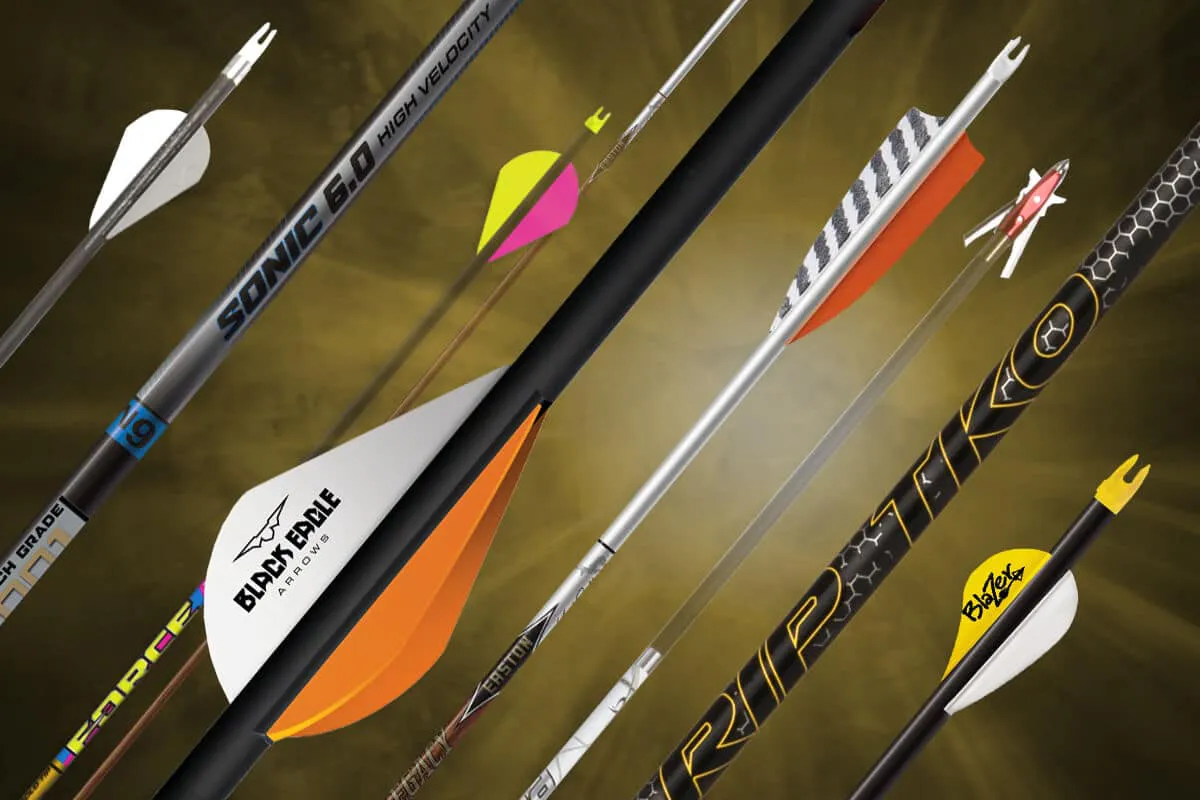Shooting the right arrows is hugely important when it comes to the trajectory of your shots, especially if you’re shooting arrows over longer distances. Don’t make the simple mistake that a lot of beginner archers make, which is to shell out lots of cash on the best bow fitted with the latest sight and a pro level stabilizer – and then buy cheap arrows to shoot.
When it comes to arrow selection, it’s important to factor in not only your draw length, but also your draw weight, what type of fletchings you’ll be using and the weight of your arrow point as well.
What Type of Arrows are used for Traditional- or Longbow?
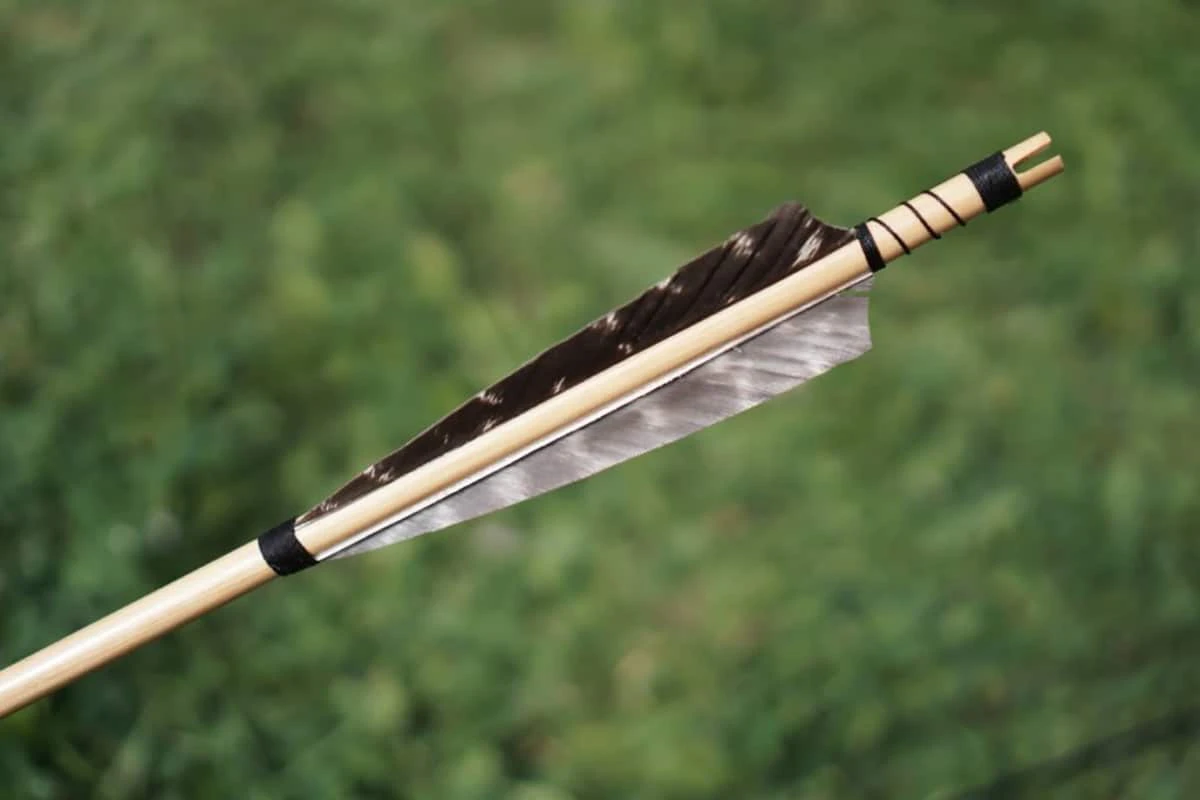
Traditional- or Longbows are the only types of bows that should be shooting wooden arrows. That being said, that doesn’t mean that you have to use wooden arrows with a longbow. Wooden arrows aren’t safe to shoot with other types of bows, and even if you’re shooting a longbow – be sure to only use quality wooden arrows.
What Type of Arrows are used for a Recurve Bow?
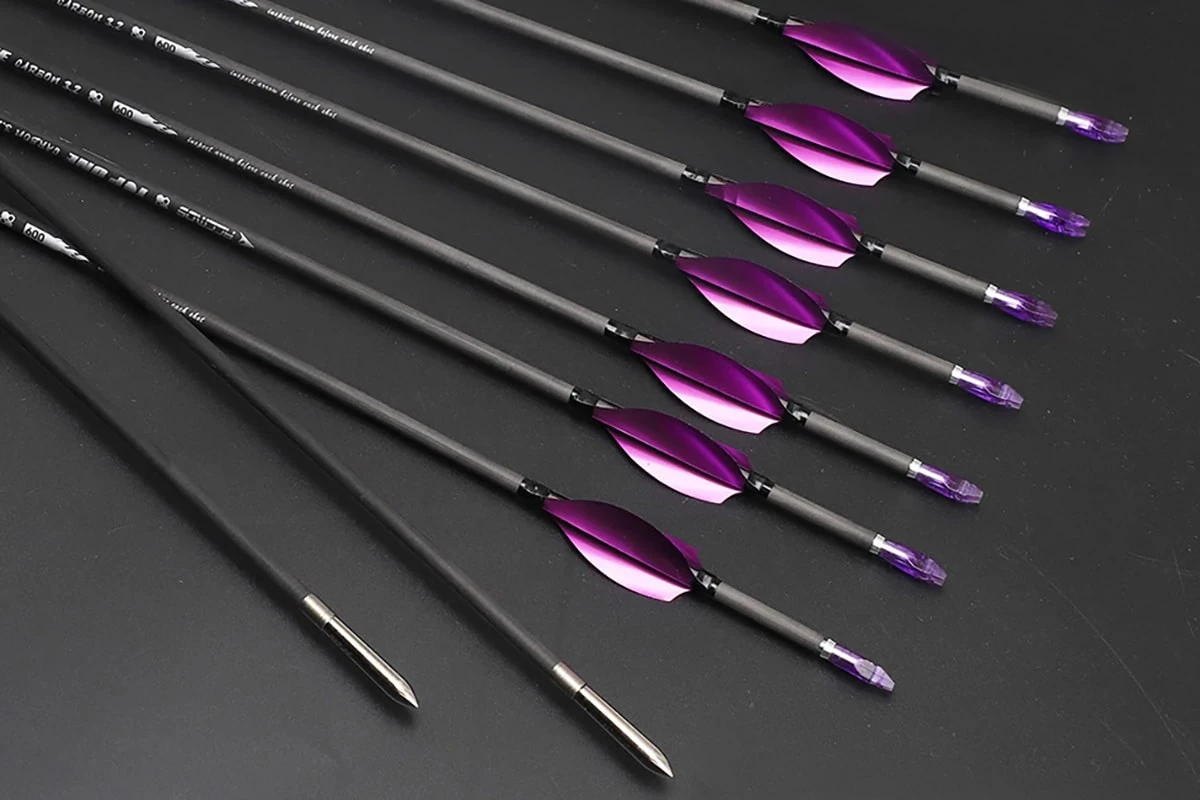
Carbon arrows are probably the all around best choice for most recurve bows, whether it be for practice target shooting, competitions and even hunting. Carbon arrows tend to be accurate, durable and are more safe than cheaper alternatives like fiberglass arrows.
What Type of Arrows are used for a Compound Bow?
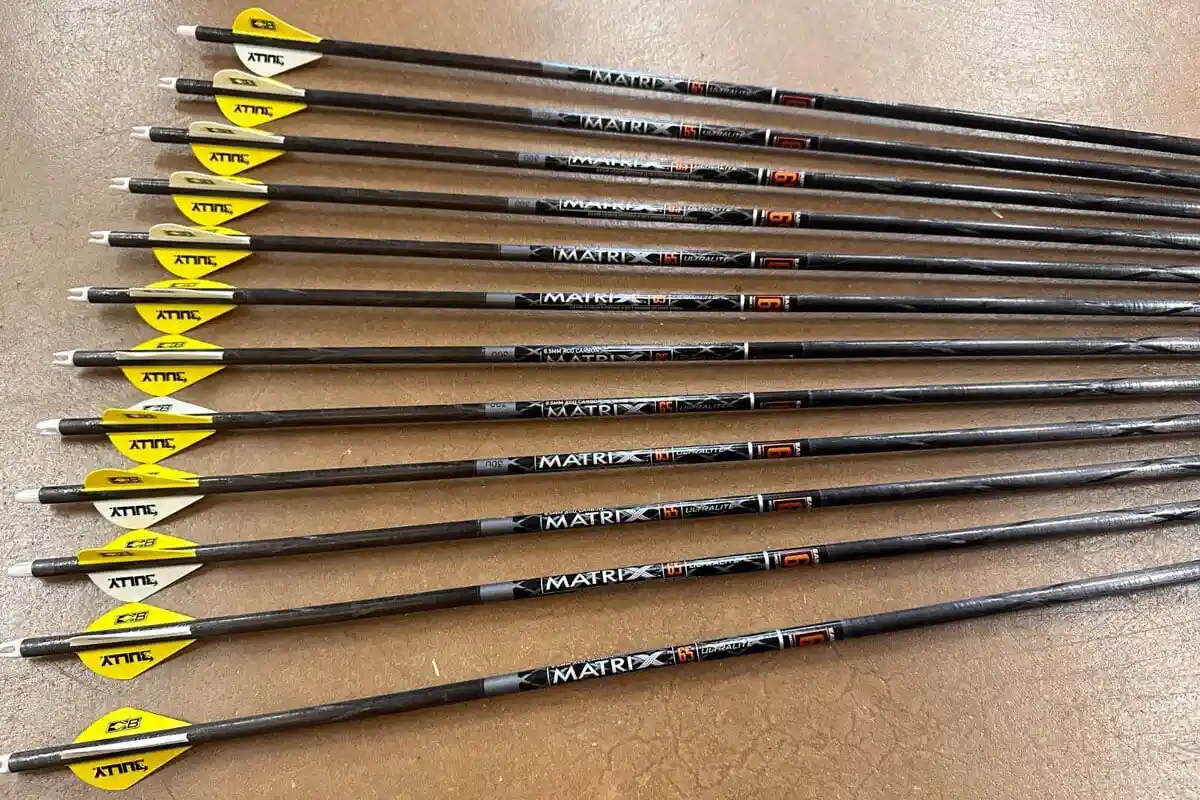
For compound bows we would also recommend carbon arrows for most all around purposes. They’re great for practice shooting, competitive shooting and even some hunting situations. You can also use aluminum arrows with compound as well, and they’re usually used for bowhunting.
Bolts for Crossbows
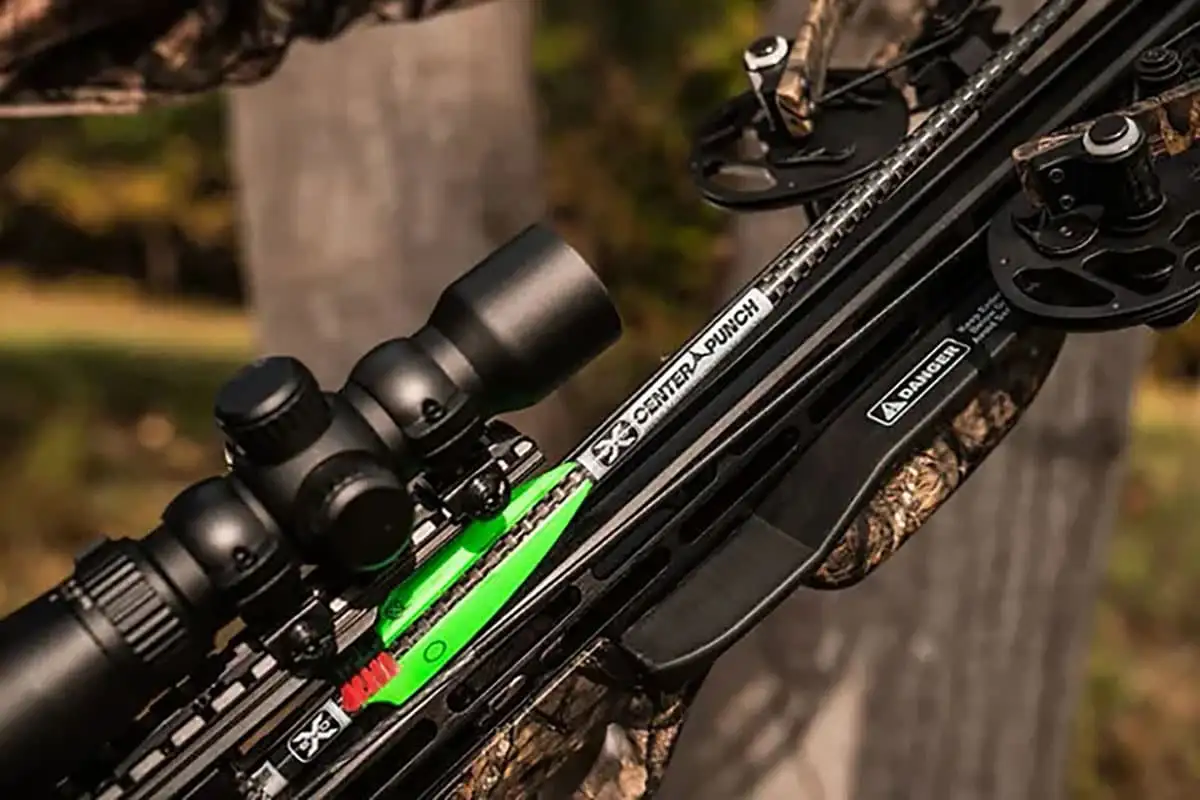
A crossbow bolt is an aluminum or carbon shaft tipped with a broadhead for hunting or a field point for practice, with feathers or vanes attached to the other end. Crossbow bolts are shorter than regular bow arrows and are usually 18″ to 22″ long
Choosing the right Bolts
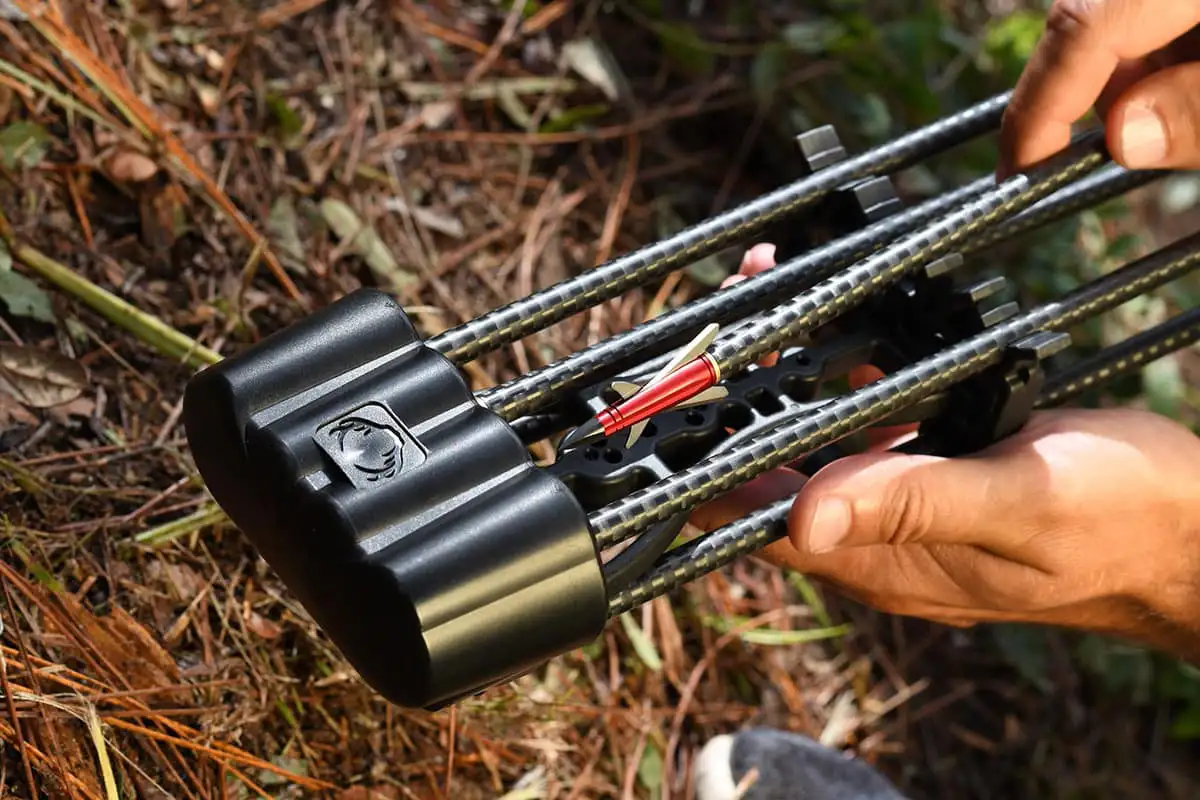
Crossbow bolts are either aluminum or carbon shafts, with a flat nock, half-moon nock, capture nock, or grooved nock, that align with the bowstring when loaded.
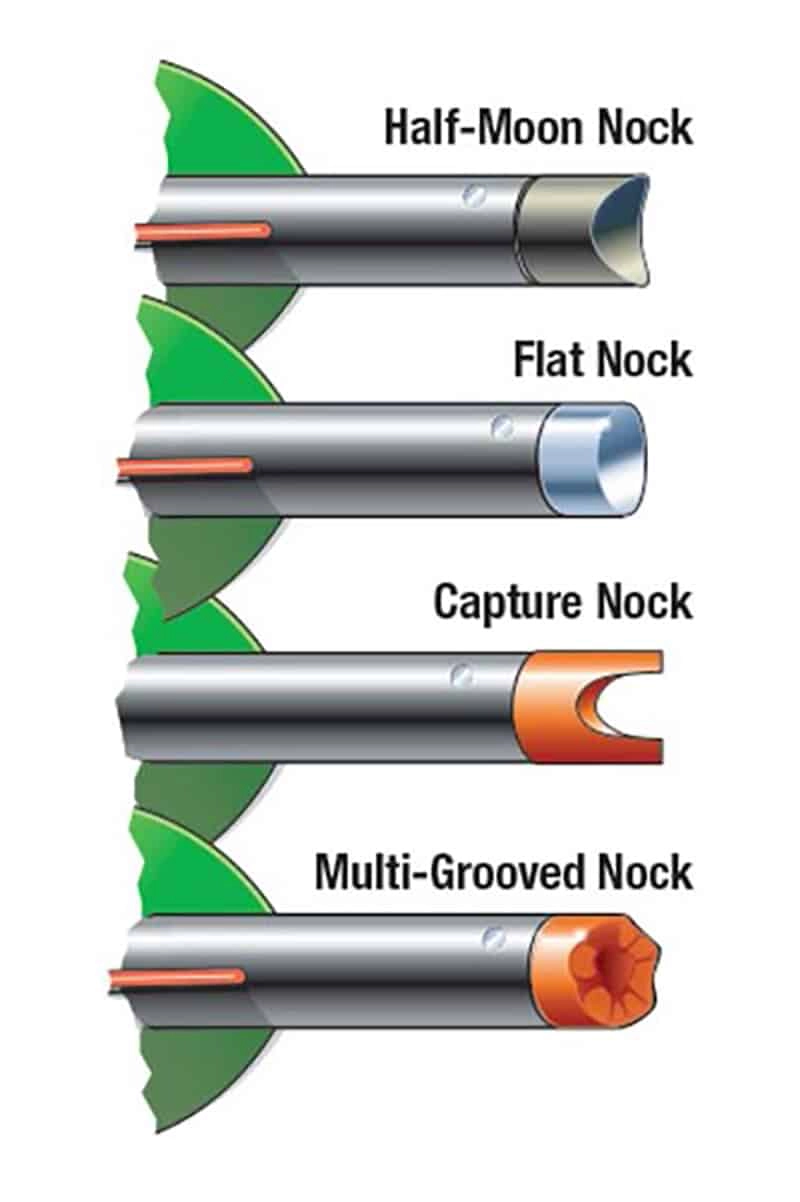
Before purchasing crossbow Bolts
it is essential to know the specifications of your crossbow. Every crossbow has a specific draw weight, which determines the amount of force needed to pull the string back to the firing position. The draw weight affects the velocity and kinetic energy of the bolt. A higher draw weight will result in a faster and flatter trajectory. The crossbow’s rail also plays a role in bolt selection. The rail and bolt guide must match the size and shape of the bolt’s nock for proper alignment and maximum energy transfer.
The length of the Bolt
is another important factor to consider. The bolt must be the appropriate length to fit your crossbow and accommodate the draw length. If the bolt is too short, it can cause dry firing, which can damage the crossbow and injure the shooter. If the bolt is too long, it can be hazardous at the front of the crossbow, which could lead to an accident. It is important to check the manufacturer’s specifications for recommended bolt length. The longer your bolt, the heavier it’ll be. The common lengths are 16” / 18” / 20” and 22” long.
The weight of the Bolt
also plays a significant role in accuracy, velocity, and penetration. The heavier the bolt, the slower it will travel, but it will also have greater kinetic energy and penetration. This seems ideal, but your trajectory will vary greatly when compared to a lighter bolt. With heavier bolts, it’s crucial to know the exact distance to your target. A lighter bolt will travel faster and with a flatter trajectory but will have less kinetic energy and penetration. The weight of the bolt should be matched to the intended target and draw weight of the crossbow. It is recommended to use bolts that are at least 400 grains for crossbows, along with a draw weight of 150 pounds or higher.
